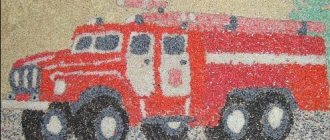LEARNING BY PLAYING
You can also teach your child the rules of good manners through play. Conduct politeness lessons at home when you are studying with him or just playing in the nursery. You can play out situations with the help of dolls and your favorite toys - write a fairy tale about someone ill-mannered, act out a mini-scene, come up with etiquette games (“tea party with dolls”, “the bear went to visit”, etc.), and then - discuss and ask: “Who did the right thing? And why? Who will mom praise?" You can put on a whole theatrical performance for kids.
Read books on this topic and discuss which characters behave correctly and which ones are rude to others. There are many books on the topic of children's etiquette, here are some of them:
- “Etiquette for children of different ages”, A. Usachev;
- “Rules of Conduct”, E. Beaumont;
- “Polite words”, O. Korneeva;
- “Sociable Tales”, T. Shorygina;
- “The ABC of Politeness”, L. Vasilyeva-Gangnus;
- “School of politeness for small owners”, N. Ivanova, G. Shalaeva;
- “Rules of conduct for well-mannered children”, G. Shalaeva, O. Zhuravleva, O. Sazonova;
- “The most important rules of behavior for well-mannered children”, Harvest publishing house;
- “Etiquette for Fidgets”, Clever publishing house;
- “How to behave at the table. Etiquette for everyone in stories, poems, pictures,” ed. R. Dankova.
In preschool educational institutions, children are taught politeness according to specially developed programs. Teachers organize classes and teach children the rules of good manners, but this does not mean that parents should abandon this topic and rely only on teachers.
History and culture of food
The rules of behavior at the table probably appeared before the table itself. They were not invented by the communists in their unique organization of schools and kindergartens. The first mentions of table etiquette appeared in the ancient world. There is mention of this in the texts of the ancient Sumerians. They say that a person must be highly moral and observe ethical standards - this is what is given to man by the gods and distinguishes people from animals. Failure to comply with the rules of behavior, according to the ancient Sumerians, leads to negativity in his life.
Eating is the most important process. He was always surrounded by all sorts of rituals and rules, strictly regulating who, when, where, what he eats. The first rules were inseparably connected with the family hierarchy, the organization of everyday life, the method of cooking, and even with the food itself. Breaking the rules while eating was considered something unforgivable, shameful, and was condemned (and sometimes punished) at all times, in any culture. Life and a person’s way of life changed, and the rules changed along with it. Family rituals have been displaced and given way to food culture and aesthetics. Rules of conduct at the table are increasingly based on secular ethics rather than on religious and national traditions.
School table manners
Of course, school is not a kindergarten. Its main function, after all, is educational, and educational is only secondary. Children are at school only half the day, but at school children also eat. Meals for schoolchildren are provided in the school canteen. The children all eat together, and the time allotted for food is quite short - only 15-20 minutes. Therefore, compliance with the rules of behavior at the table is mandatory.
Rules of behavior in the school canteen
- Don't run. You must walk to and from the dining room at a normal pace so as not to become a victim or cause of painful injury;
- Wash your hands before eating;
- Don’t rush to take a seat, don’t push your comrades out of the way;
- Maintain the order;
- Walk calmly around the dining room, watch your step so as not to slip;
- Do not swing your arms if you are holding instruments in them;
- Do not talk while eating, eat with your mouth closed;
- Use cutlery correctly. Remember what is eaten with a spoon and what is eaten with a fork and knife;
- Use napkins;
- Don’t drop food on the floor, and if you drop it, pick it up;
- Don’t speak badly about the dishes – respect the work of the cooks;
- After eating, put away your dishes;
- Be polite and thank the cafeteria workers.
It is important to remember that children do not learn table manners from books or instructions, but rather learn from their parents. Do you want your child to have an idea about proper nutrition and its organization? So, pay attention to how the table is organized in your family? Cover the table with a tablecloth, no need to wait for special occasions. Use beautiful cutlery, be nice to each other at the table. Get together more often - it greatly strengthens the family and creates an atmosphere of trust. Let these little things become the norm in your home. Add your own special family rituals that your now-adult children will proudly bring into their future families as heirlooms that keep you all together.
WHAT IS ETIQUETTE?
Etiquette is a set of norms and rules governing the behavior of people in society or a particular social group. When we talk about etiquette for children, we mean the rules of good behavior, first of all, in relation to adults, because they are the ones who can evaluate behavior as “good” or “bad” due to their experience.
Etiquette is divided into different types - there are both generally accepted rules and special etiquette for individual occasions (for example, official, religious, mourning). Children should be taught etiquette gradually, and for preschool age, those rules of good manners that children can apply in everyday situations are sufficient.
Why do we need table rules?
Compliance with rules and etiquette at the table is not the prerogative of a certain social group of people. It has nothing to do with the level of income or social status of the family. “We are from simple people, from workers. Why do we need all these tablecloths, napkins, forks and knives? Why does my child need all this? “Kindergarten teachers sometimes hear something similar. It is important to understand that the culture of nutrition and behavior is not whims, not the desire to “show off” in front of others. The fact is that following certain rules of etiquette at the table makes sense and has specific benefits for children. Let's look at some of them:
- Washing your hands before eating protects the body from pathogenic bacteria entering with food;
- Setting the table using a clean tablecloth and disposable napkins protects food from coming into contact with the surface of the dining table;
- The requirement to “not fidget” and not talk while eating is to prevent serious incidents at the table (the child may choke);
- The request to “take your time,” sit up straight and chew your food thoroughly is nothing more than helping the stomach digest what you eat quickly and easily;
- A napkin placed on your knee (or chest) will protect your clothes from getting dirty.
Safe behavior on the street - communicating with strangers
I would especially like to highlight the use of special cutlery during meals. Many still believe that this is nothing more than deliberate behavior of the upper class, in order to show their skills and knowledge in this area. It's not like that at all. To use devices skillfully, you do not need to be a representative of a certain group. The use of devices is not intended to exhaust, but to facilitate the actions of the eater . It is much more convenient to eat meat by cutting it into pieces (rather than biting whole with a fork), it is convenient to cut fish with a special fork, and eat dessert with a small spoon or fork. It's true?
Memo “Rules of behavior at the table for older preschoolers”
- Sit up straight, don’t “fall apart”;
- Feet together, do not cross your legs;
- Don't shuffle your feet;
- Don't talk while eating;
- Don't twist or push;
- Eat and don’t get dirty, don’t spill food on the tablecloth;
- Don’t bite off big pieces – eat slowly;
- Eat with your mouth closed, do not slurp;
- Hold your spoon, fork and knife correctly;
- Don't crumble the bread, bite it over your plate;
- Bend over the spoon, do not bring it to your mouth;
- When you drink, raise the cup to your mouth;
- After eating, put the cutlery on the table;
- When you get up from the table, pull up your chair and thank the adults.







